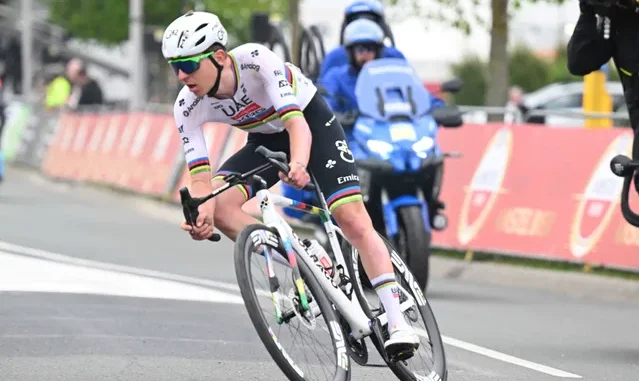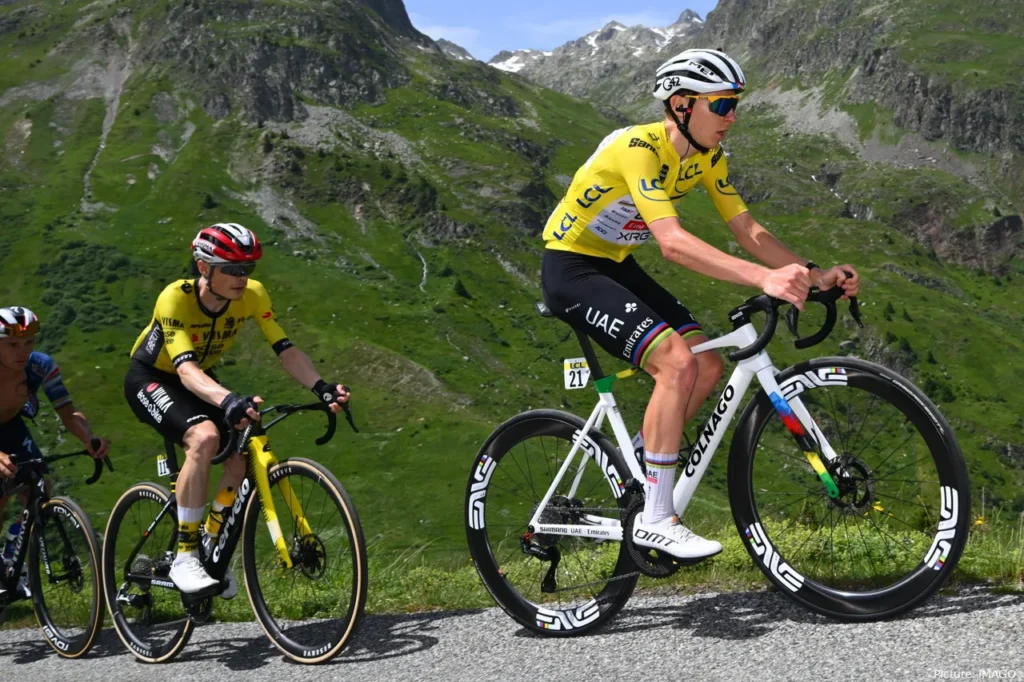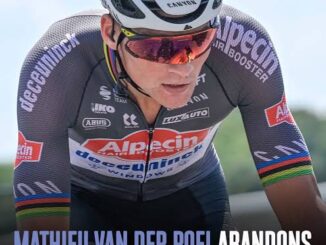
Tadej Pogačar made light work of the competition at the Critérium du Dauphiné, showing once again that he’s untouchable in the mountains. Even though his time trial performance was below his usual standard, he dominated the climbing stages with ease, calmly fending off attacks while maintaining his signature high cadence from a seated position.
“He rides just as fast but with an even higher cadence,” said Thijs Zonneveld on the In de Waaier podcast. “He’s clearly focused on that aspect. His cadence is unusually high, but it’s also about how smoothly he stays in rhythm on the bike.” Zonneveld noted that Pogačar had worked extensively on torque training. “Power is about how hard you push, but torque is about the timing of the force you apply,” he explained. “A lot of riders train that by grinding uphill in heavy gears. Pogačar has developed that remarkably well better than in previous years.”
This training has allowed Pogačar to convert his already impressive power into even more efficient output. “It’s why he can launch attacks while seated he doesn’t need to stand to generate big torque. He can do it all sitting down. I think he’s pedaling at 90 RPM uphill, which is rare because most riders drop their cadence on climbs. With him, it hardly changes.”
Pogačar’s form has surged since switching to shorter crank arms last year. While Zonneveld remains skeptical about whether shorter cranks are a game-changer across the board, he acknowledges that they seem to work for the Slovenian. “It looks like a simple solution, but there’s still limited proof that shorter cranks help maintain speed more easily. They make it harder to apply force suddenly, though so if a rider needs to accelerate aggressively, it might be tougher.”
Not every rider can adopt Pogačar’s technique. “Take Tiesj Benoot, for instance he climbs standing up, shifts gears, and has more choppy pedaling. Riders like him would struggle with this approach,” Zonneveld said. “But if you can spin a high cadence with shorter cranks, there are real benefits: you conserve more energy and improve aerodynamics by lowering your position due to better hip angle flexibility.”
Ultimately, Pogačar is a rare case. “It may be perfect for him because he can still generate high torque. That’s crucial if you can’t, you risk losing explosiveness. There’s definitely potential in the method, but it has to match the rider’s overall fit and physiology.”




Be the first to comment